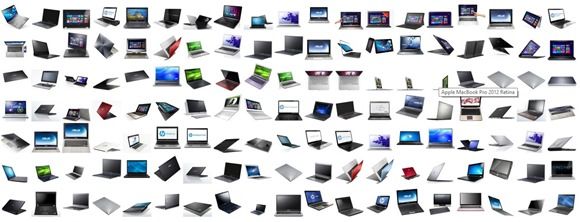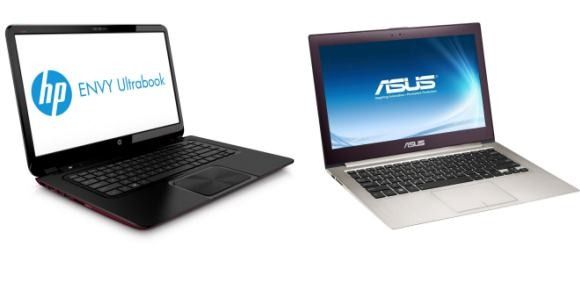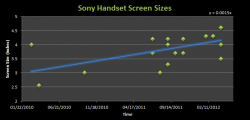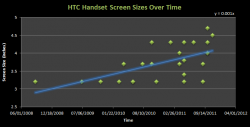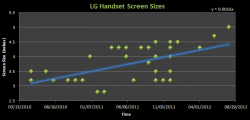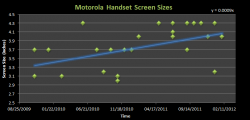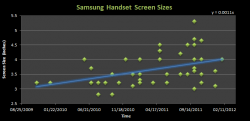Occasionally, like every business, we update our plans and predictions to make sure we’re on the right course. We’ve just done that for the Ultrabook sector and from what we can see there’s a lot of potential in 2013 for Ultrabooks to rise to the levels of sales that netbooks had three years ago – an ecosystem that many were happy to be in. There’s potential for more in 2014 too as the Ultrabook moves into its third generation. This will be the Ultrabook that Intel wanted to make from day one and is the only Ultrabook iteration that should be used to evaluate the segment. We’re positive that prices, performance, style, battery life, operating system and form factors will impress customers and developers to make the upgrade in 2013 and that we’ll see an impressive sales spike later in the year.
Tag Archive | "analysis"

Round-up: Ultrabook Outlook, UK UX32VD and HP Envy 4 Review
Posted on 20 July 2012
Here’s a round-up of some news that I want to bring to you quickly. UK readers stay tuned. Students might want to buy an Envy 4 in the next 48 hours and Intel gives us more to think about on Ultrabook sales growth.

No ‘Fail’ in Ultrabooks This Quarter
Posted on 14 July 2012
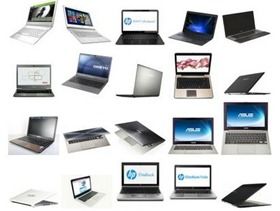 What a depressing, and somewhat embarrassing set of news items we’ve seen for Ultrabooks on the Web this week.
What a depressing, and somewhat embarrassing set of news items we’ve seen for Ultrabooks on the Web this week.
You may have noticed that there hasn’t been much interesting Ultrabook news this week and as we hit summer holidays, silly season starts. Stick with Ultrabooknews for a more sensible take on whats’ going on because journalists, no, juniors employed to cover summer holidays are fed with news items and hints and it usually ends up looking cheap.
“Hey, IDG published a report on the PC market. There’s a few mentions of Ultrabooks in it and it looks bad. Send some provocative copy to the editor because page views are down.” Junior writer ends up with pieces that get edited to this, this and this.
Fact 1 – There are no Ultrabook sales numbers available, only best guesses.
Fact 2 – Ultrabook sales started in June – the last month in Q2.
Where does Fact 2 come from? Us. We’ve got more too…
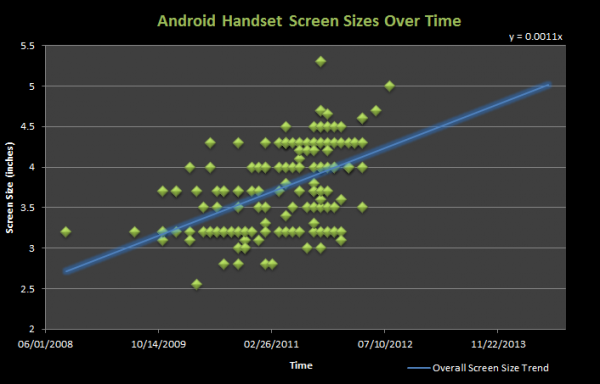
Report: Smartphone Screens Growing over Time, 5? Screens the Norm by End of 2013
Posted on 08 February 2012
I’ve been following a disturbing trend over the last few years as the Android platform (and now WP7 as well) matures. Smartphone screen sizes just keep growing and growing, and they don’t seem to want to stop. I have a number of issues with smartphones that have overly-large screens. It pains me to see that, while Android is known for giving users many choices, it’s nearly impossible to get a reasonably-sized flagship phone. For me, for a smartphone to be a ‘smartphone’ at all, and not a tablet, it has to be easily usable with one hand. Of course then the definition of smartphone/tablet will change from person to person, because our hands are not all the same size, however, there is certainly a finite limit for everyone where a phone will become too big to be comfortably used with one hand.
I’m currently testing the Samsung Galaxy Nexus. So far it’s been a rather wonderful phone, and I recently wrote this on Google Plus:
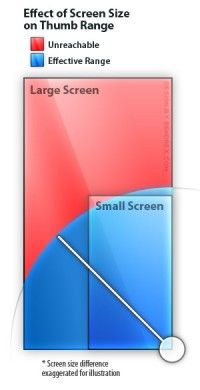
I’ve been using the iPhone for 3 generations. Right now I’m testing a Galaxy Nexus. If they made the same exact phone in a size that’s actually comfortable for one-hand use, I might call myself an Android convert. Curse you 4″+ screens and the awful fad that you are!
For me, the 4.65″ screen on the Galaxy Nexus is just too big. I constantly have to shuffle the phone around in my hand because Android places the two most frequently used aspects of the interface (the menu buttons and the notification drawer) at opposite ends of the phone. The size of the phone and the required shuffling means that I’ve got a poor grip on it, and I’ve been rather worried about dropping it during use. Again, those with larger hands will not have the same issue at 4.65″, but at some point they will run into the same problem.
Android Handset Screen Size Over Time
To show the trends of Android smartphone screen sizes over time, I compiled screen size and release date data from 155 smartphones from five major manufacturers (Motorola, Samsung, HTC, Sony, LG). I’d like to thank PDADB.net for their comprehensive release date info. (click to enlarge graphs)
As you can see, since the introduction of the 3.2″ HTC Dream / G1, screen sizes have consistently increased. Today we’re seeing 4″, 4.5″, 4.7″, 5″, and even 5.3″ smartphones! A simple projection (seen on the main chart) suggests that before 2013 is out, many handsets will have 5″ screens, while the flagship phones of that time may have even larger screens (if this trend continues) of 5.5″ or perhaps 6″.
With a slope of 0.0016, LG is increasing its Android smartphone screen sizes the most rapidly of these five manufactures. Despite pioneering some of the largest phones on the market at certain points in the timeline, Motorola is actually showing the slowest rate of increase in Android smartphone screen size with a slope of 0.0009, but of course this isn’t very far off from the leader!
Why is This Happening?
A good question to ask is what’s prompting the growth in screen size. It seems natural for manufacturers to have experimented with screen sizes as the platform grew legs. Different screen sizes are a point of differentiation for an Android phone manufacturer — a way to stand out in a sea of similar options. Bigger screens were also an easy way for companies to try to beat out the iPhone on features, even if the ‘bigger is better’ argument doesn’t hold much water in this case. Now it seems to have turned into a snowball effect whereby manufacturers are trying to one-up each other to have the biggest screen in town (all the while, Apple has stuck with 3.5″ since the introduction of their handsets). You wouldn’t believe how many times I’ve heard the phrase “biggest and baddest” when marketers are referring to a new Android phone. They use this phrase as though bigger is always better, but I must say — when it comes to comfortable one-handed smartphone use — it is not.
Where Does It Stop?
My question is this: where do we draw the line? As I mentioned, despite variations in hand sizes, everyone reaches a limit of comfortable one-hand usability at some point. I don’t have the raw data to back it up, but I believe that Android smartphone screen sizes are rapidly surpassing the maximum size for comfortable one-handed use by the average Android customer. None of this is to say there aren’t advantages to having a larger screen (particularly when it comes to media viewing), but given that people much more frequently use their smartphones for apps rather than media viewing, the argument for surpassing a users one-handed comfort zone to provide a better media experience is a poor one.
It’s not so much that screen-sizes are increasing (the chart clearly shows that other sizes are still available), but the bothersome fact is that it’s near-impossible to get a flagship phone unless you’re willing to buy one of the massive phones on the market. If you want a phone that comes in a size that’s comfortable for one-handed use, you have to be willing to settle as a second-class Android citizen — the only options available to you will likely have slower processors, less RAM (and may be based on an older platform) than the newest and biggest flagship phone currently on the market.

10 Reasons Why Ultrabooks will be Cheaper than Traditional Laptops
Posted on 24 January 2012
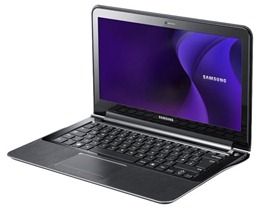 You might think of Ultrabooks as a marketing push by Intel or an attempt to copy the successfully MacBook Air and in some respects you’d be right but there’s a whole lot more to it than that. We’re witnessing a complete change in laptop design, manufacturing, performance, efficiency, weight, aesthetics and features. It brings real advantages to the end user. It also brings advantages to the design and manufacturing process too and, you might be surprised to hear, will reduce the cost of laptops over time.
You might think of Ultrabooks as a marketing push by Intel or an attempt to copy the successfully MacBook Air and in some respects you’d be right but there’s a whole lot more to it than that. We’re witnessing a complete change in laptop design, manufacturing, performance, efficiency, weight, aesthetics and features. It brings real advantages to the end user. It also brings advantages to the design and manufacturing process too and, you might be surprised to hear, will reduce the cost of laptops over time.
At the end of the day (circa end of 2013) the manufacturer will end up with a laptop that’s quicker to design, develop and cheaper to manufacture, ship and support than any laptop before it. The advantages aren’t limited to ‘Ultrabooks’ either. Every part of the laptop market should benefit. Here are 10 reasons why.

Ultrabook – Entry Level Attack or Fallback Position?
Posted on 05 September 2011
Lenovo gave us the U300S, Asus gave us the UX21 and UX31, Toshiba gave us the Z830 and Acer gave us the Series 3 this week at IFA. Samsung launched the Series 7 tablet too. They all have one thing in common. No, its not the word ‘Ultrabook’, it’s the word ‘tablet.’
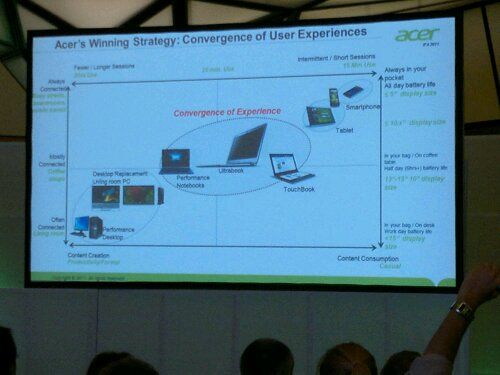
We’ll get this weeks new Ultrabook details into the database as soon as possible but before that, let me give you my current analysis based on knowledge so far.
The tablet is truly eating into the PC space.
That’s no surprise. In the developed world, home netbooks are going to be hit first. I doubt many of the millions of netbook owners will update to another netbook. Why would they? There’s little difference today than there was 3 years ago. A dynamic, touch and app-enabled product is a much more likely choice.
It’s happening in the office space too where iPad experimentation is revealing some efficiencies.
What it means is that while Intel tries to push into the mobile space, they are also putting huge effort into re-architechting their notebook business to pick-up where the tablet can’t reach. Re-positioning is required. They’re building a second attack strategy. Or possibly a safe fall-back position.
To stay at a safe distance from Tablets requires leading edge silicon to create desktop-class power in a feature-rich laptop that does things that a $500 tablet won’t be able to do for a long long time. Graphics, wireless video, high-end connectivity, advanced security, sensors and even better battery life than tablets. Style and portability mean they become every bit as personal as the tablet. As end-users look to swap-out the low-end laptop and upgrade the desktop, it could mean a complete change to Tablet and Ultrabook for many. The total cost of ownership there is similar but the flexibility is way higher.

Intel’s Analysts on The Ultrabook – Honestly?
Posted on 29 August 2011

“We’re in for another boom”
“In everybody’s hands”
“The functionality and utility of a tablet”
Intel’s latest set of promotional material related to the Ultrabook consists of three very short videos showing Intel analysts views on the 22nm process and the advantages of an Ultrabook.
Personaly I hope they produce something a bit better than this in the near future because this looks like It was rushed through the editing room.
Can someone explain to me why an Ultrabook has the functionality and utility of a tablet? Where are the focused, low-costs apps and store? Where’s the always-on.capability, the touchscreen, the 350gm-700gm weight and the $200 starting point?
You may disagree but in my opinion, Ultrabooks are the devices that can do everything that a tablet can’t! They are the devices you need if you’ve got a tablet. You can now throw away the dusty netbook and get busy with 720p video editing, 1080p video conversion, music creation, comfortable text input, full and unlimited web browsing, flexible interfacing and expansion, multi-user usage, office software, software development and enterprise compatibility.
I know there are design elements that come from tablets but thin design and quick-start don’t give them the functionality and utility of a tablet.
As for ‘In everybody’s hands’ well that’s bordering on the offensive. Consumers buy $500 pcs, not $1000 PCs, in many countries it’s less or nothing at all.
Sorry Intel. I appreciate your lead and skill with the technology but you’re going to have to get busy on the message. Tablets are satisfying huge amounts of consumer computing requirements and in many cases do things better than a PC architecture. The Ultrabook has its place and we’re excited about that but let’s be honest and realistic about where it can effectively fit in.
Videos after the jump. . .
 |
| |||
 |
| |||
 |
| |||
 |
| |||
 |
| |||
 |
| |||
 |
| |||
 |
| |||
 |
| |||
 |
|

